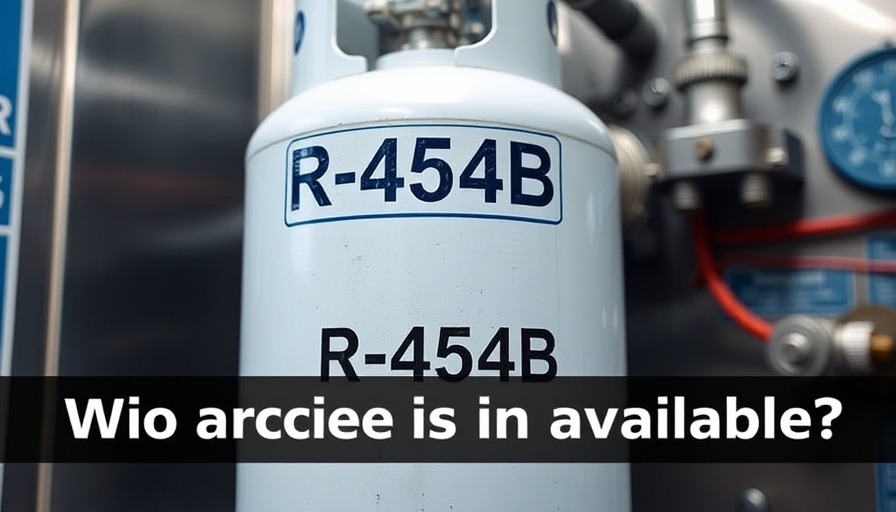
Breaking Down the R-454B Dilemma: What’s Actually Happening?
The HVAC community is feeling the heat—quite literally—as the search for R-454B refrigerant continues to challenge contractors nationwide. A highly sought after replacement for R-410A, the journey to transition to R-454B has been bumpy, marked by shortages and distribution woes that keep resonating across the industry. So, is R-454B finally easier to get?
R-454B: The Urgency Behind the Switch
The urgency for R-454B shouldn’t be understated. With the introduction of federal regulations from January 2025, contractors are racing to embrace this low-global warming potential refrigerant. However, as Lau Miscione reports, the practicalities of sourcing this much-needed refrigerant have thrown many HVAC jobs into disarray.
Current State of the Supply Chain: A Crisis?
Logistical challenges are rampant. Some contractors in major markets, like Dallas and Alabama, are reporting severe delays—not because the refrigerant is unavailable per se but because specialized cylinders necessary for its storage and transport are in short supply. This predicament leaves many contractors scrambling to manage customer expectations even as they juggle delayed projects due to the unavailability of the necessary equipment.
Who’s Caught in the Crossfire?
As the market responds to these hurdles, several different players are affected. Homeowners and building managers are understandably anxious as installers relay messages of delays. The frustration trickles down through layers, reaching distributors, who are left fielding complaints from both contractors and customers alike. Amid rising prices—some suppliers are charging up to $2,000 per cylinder—everyone involved needs to reassess their approach for the near future.
The Panel Discussion: Insights From Industry Leaders
At a recent emergency panel session hosted by ACCA, industry leaders came together to address the crisis. Representatives from major companies, including Carrier and Honeywell, shared insights and proposed solutions. The consensus? The solution lies in collaborative forecasting methods. As shared during this session, proactive measures, such as increasing production rates and temporary shifts in refrigerant delivery strategies, could ease current bottlenecks.
Looking Forward: What Does the Future Hold?
While the crisis lingers, hopes of a relief window have emerged, with expectations for improvement by mid-July. However, Glen Bixby cautioned against expectations of a seamless transition, stressing that even when supplies improve, challenges could remain. As contractors vigilantly work to navigate these turbulent waters, they need to anticipate job requirements for R-454B while maintaining open lines of communication with clients regarding potential delays and costs.
The Takeaway: Key Strategies for Contractors
The key takeaway for contractors is to begin forecasting projects that will require R-454B now, rather than waiting until the last minute. Engaging customers early about potential delays will build trust and help manage expectations.
In a market filled with uncertainties, such strategies might just pave the way for smoother sailing in the future—one less hiccup to worry about in an already challenging profession.
 Add Row
Add Row  Add
Add 




Write A Comment